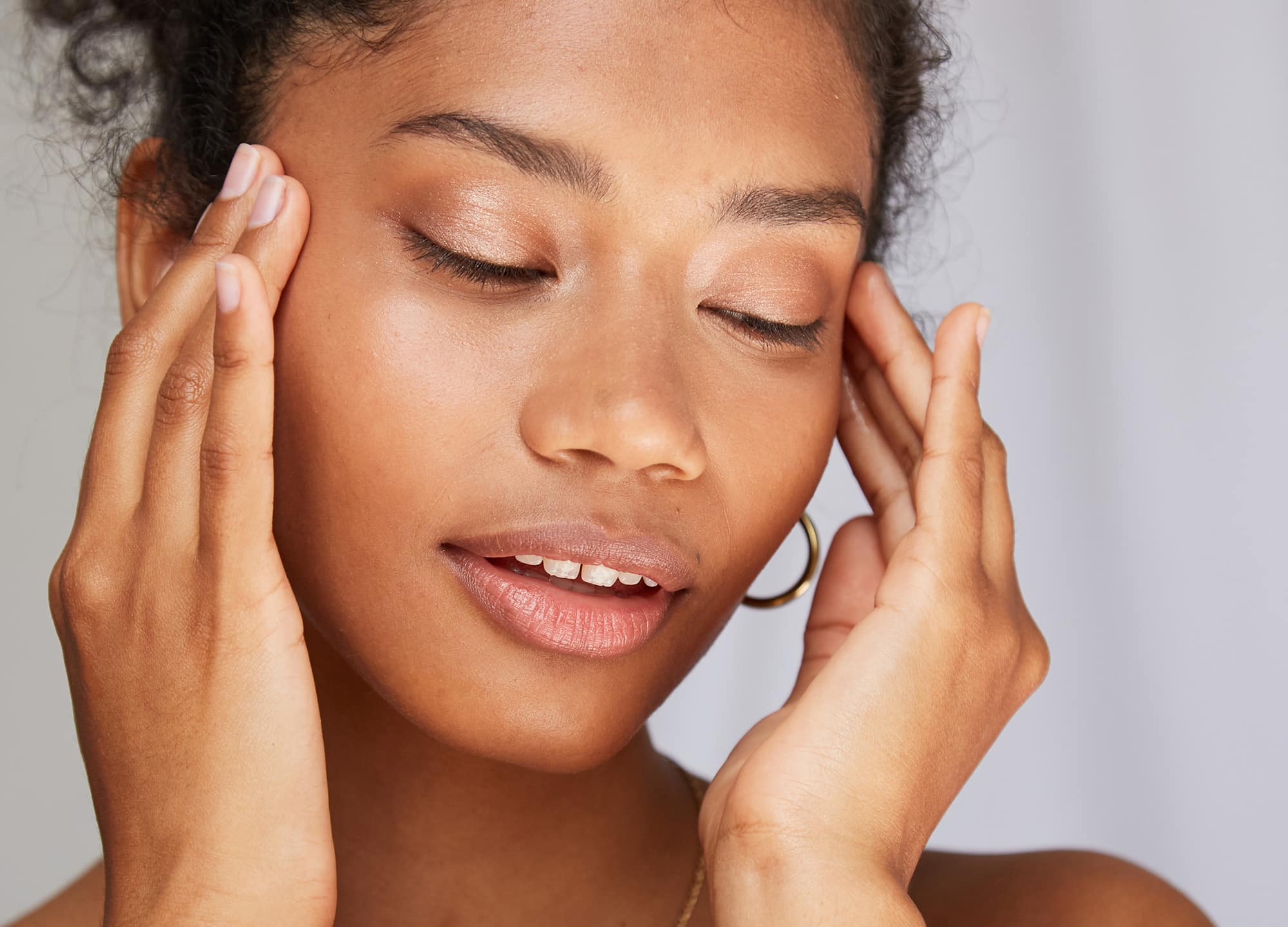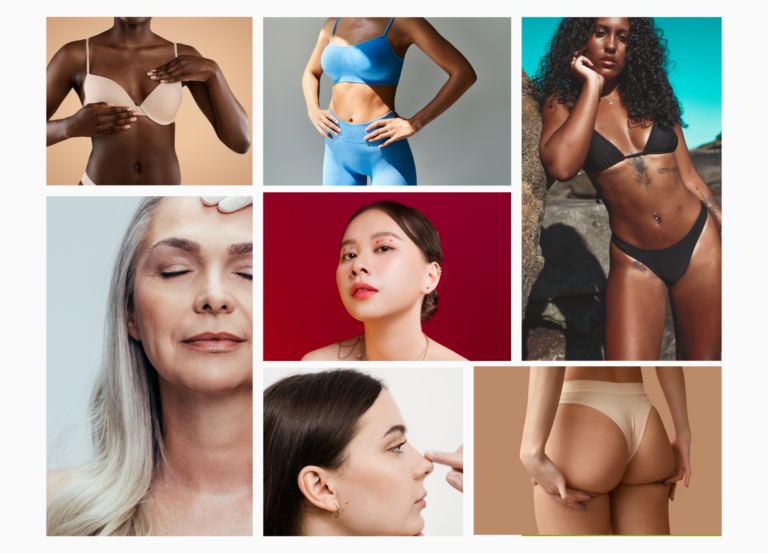Science says it can help turn back the clock. Just don’t expect the same youthening results you’d get from a doctor.
Yoga can work wonders on your body, strengthening muscles and increasing flexibility. So it’s not too much of a leap to imagine that it can transform your face too. That’s the promise of face yoga, which is often billed as a natural, noninvasive way—no needles, no surgery, no pain—to beat the aging process.
Despite the name, face yoga isn’t yoga in the traditional sense—there’s no focus on breathing and no need for a mat or props. Instead, it involves a series of resistance-oriented facial exercises designed to reduce signs of aging. Associating the exercises with yoga seems to have been a wise move, however: just as the popularity of the ancient practice has exploded in modern times, so too has face yoga. There’s a slew of YouTube channels devoted to it as well as books, DVDs, and apps. Private and group sessions are also available. Danielle Collins, who developed The Danielle Collins Face Yoga Method, currently has more than 700 teachers in 50 different countries, and many of her YouTube videos have well over a million views. Fumiko Takatsu, the creator of the Face Yoga Method, has written six books on the topic, one of which became a national best seller in Japan.
The promised benefits of facial yoga extend to all areas of the face: it’s said to raise droopy eyes and mouth corners, firm and lift cheeks, reduce double chins and jowls, smooth crow’s-feet and forehead furrows, and leave skin glowing by increasing blood circulation.
Evidence for face yoga exercises
The burning question, of course, is: Does face yoga really work? “Although available studies have had limitations, they—along with anecdotal evidence—have shown there may be a benefit,” says Dr. Sheila Farhang, a Tucson, Arizona, board-certified dermatologist who’s also a yoga instructor.
The most often cited study was published in 2018 in the journal JAMA Dermatology. During the study, 27 middle-aged women 40–65 years old performed a series of 32 facial exercises for a minute each. For the first eight weeks, they did the exercises daily for 30 minutes. For the final 12 weeks, they did the same exercises every other day for 30 minutes. The exercises used in the study were developed by Gary Sikorski, the creator of Happy Face Yoga, a facial exercise program that’s available on DVD and streaming video.
At the end of the study, dermatologists noted a younger appearance, with fuller upper and lower cheeks. That’s no surprise, considering that moves like the Cheek Lifter and the Happy Cheeks Sculpting, which target the cheek muscles and help lift the middle portion of the face, were performed. This improvement in cheek fullness, researchers reported, made the participants look nearly three years younger. The average estimated age was 48.1 years after the exercises, versus 50.8 years before.
What accounts for the improvement? Think of face yoga as push-ups for the face. Just as resistance exercise can increase the size of your biceps and quadriceps, “these exercises enlarge and strengthen the facial muscles, so the face becomes firmer and more toned and shaped, like a younger face,” explains board-certified dermatologist Dr. Murad Alam, vice chair and professor of dermatology at Northwestern University Feinberg School of Medicine in Chicago and the lead author of the study. In turn, the muscles, which in the face are attached to your skin, pull the skin over them more smoothly. “Face yoga isn’t really a wrinkle eraser,” says board-certified dermatologist Dr. Mona Gohara, associate clinical professor of dermatology at Yale School of Medicine. “It creates a more youthful appearance because it makes the skin drape differently.”
Related: 3 Extreme Anti-Aging Treatments That Don’t Actually Work—According to Science and Doctors
Be realistic about the benefits of face yoga
Looking three years younger is an improvement, but it’s not the same result you’d get from a facelift, which some face yoga programs claim to deliver. By way of comparison, one study calculated that a facelift reduces a person’s outward age by about six to eight years, depending on the extent of the procedure and the skill of the surgeon.
“Let’s be realistic here—these changes are subtle,” says Dr. Farhang, who’s also the founder and medical director of Avant Dermatology & Aesthetics. “I personally think the real benefit is not so much the ‘facelift’ effect people are going for but the skin glow from the increased blood flow. I’ve also seen it help with decreasing puffiness of the face, which may confound muscular hypertrophy claims.”
Seeing, of course, is believing. But it’s hard to get a real handle on how effective face yoga is, because the before-and-afters available from the various programs aren’t photographed in a standardized way—the differences in lighting, hair and makeup, and camera angles make it difficult to draw conclusions. No photographs are available from the Northwestern study, but you can check out before and after shots of Happy Face Yoga here, The Danielle Collins Face Yoga Method here, and the Face Yoga Method here.
Can face yoga cause wrinkles?
Not surprisingly, this is a major concern: after all, repetitive motions are largely to blame for the crow’s-feet and frown lines that so many of us want—or are opting for Botox—to eradicate. Who wants to build up their midface, only to create or deepen these lines?
“If exercises are done in the correct way, they shouldn’t cause wrinkles,” says Collins. With her technique, the face isn’t screwed up in any direction. “I encourage every client to use a mirror, to ensure their face stays smooth while doing the exercises.”
Dr. Farhang agrees that a lot of facial exercises can be done without creating wrinkles. Take the Owl, for example, which firms the forehead to reduce furrows. With this move, place your index fingers just above and parallel to your eyebrows and your thumbs on your cheeks (your fingers will form the letter “C”). Pull down with your index fingers while raising your eyebrows, but only halfway, so the muscle is engaged but you’re not crinkling the skin. Hold the position for 10 seconds and repeat three times.
It’s reassuring that the Northwestern researchers did not see more noticeable signs of facial aging when women did the facial exercises. That could be because the moves were done so briefly—one minute each—that they might not have had that enough impact on the face muscles to lead to wrinkles, explains Dr. Alam.
One wrinkle, so to speak, is that the exercises in the study were performed for only a short period of time—five months in total. “The data may show that face yoga can be beneficial by boosting facial muscles, but the jury is still out on the long-term effects,” says Dr. Gohara.
While face yoga may be a good alternative to invasive procedures, it’s not clear if this is a good complement to them. Be sure to check with your dermatologist or plastic surgeon before starting a face yoga practice. If you’ve previously had cosmetic injectables, like Botox or dermal fillers, face yoga may shorten their efficacy.
How long does face yoga take to work?
As with any exercise program, face yoga results take time—in the Northwestern study, it took four weeks before a reversal in any downward drift was noticed. “Consistency is key, just like with everything else,” says Dr. Farhang, who recommends doing face yoga daily. One thing to be cautious of, she warns, is possible jaw pain from these repetitive exercises. While some jaw moves can help relieve tension in the area, everyone is different, so it’s important to listen to your body and stop doing the exercises if you experience discomfort.
Collins concurs that the key to seeing improvement is a regular daily practice. “If you can do anything from two minutes to 50 minutes a day, you will see results,” she says. “But for longer-lasting results, it takes some people six months.” If you’re not motivated, you may be disappointed and give up—there were 11 dropouts in the Northwestern study. Of those who stuck with it, Dr. Alam says they may have been particularly willing to continue with an exercise regimen.
One upside to face yoga compared to below-the-neck workouts: once you master the moves (and don’t need a mirror in order to be sure you’re not scrunching up your face), you can do them practically anywhere. Just prepare for some stares or second (or third) glances if you decide to do them in public.
How to maximize the benefits
If you’re going to try face yoga, be sure to continue your other healthy habits. Ideally, that includes a traditional yoga practice, which has its own anti-aging benefits. For instance, the increase in blood flow to the face that results when doing inversions like Downward-Facing Dog or a headstand may decrease the loss of elasticity and collagen that often accompanies skin aging due to sun damage, according to Dr. Farhang. Don’t discount the benefit of a good skin-care regimen either. “Using sunscreen and a retinoid has been scientifically proven to have an anti-aging effect,” says Dr. Farhang. “So, yes, give facial exercises a try—but don’t forget what really works.”
Related: 5 Signs You’re a Good Candidate for a Facelift—and 4 Signs You’re Not
Do try this at home
If you want to try toning face yoga exercises, here are how-tos for a few key moves from Collins’ method.
- The V, which reduces fine lines and wrinkles around the eyes and makes them look more open: Put your middle fingers together between your eyebrows and then apply pressure to the outer corners of your eyes with your index fingers. Look up and start to move the lower eyelids upwards, making a strong squint. Relax and repeat six more times. To finish, squeeze your eyes shut for 10 seconds, then relax.
- Smile Smoother, which reduces lines around the mouth and lifts and firms the cheeks and jawline: Hide your teeth with your lips and make an “O” shape with your mouth. Then, smile as wide as you can, keeping the teeth hidden. Repeat six times. Next, hold the smile shape and place one index finger on the chin. Start to move your jaw up and down as you tilt your head back. Relax and repeat twice more.
- Giraffe, which tones and lifts the platysma muscle in the neck area: Looking straight ahead, place your fingertips on the top of your neck and lightly stroke the skin down as you tilt your head back. Bring your head back down and repeat twice more. Then, jut your lower lip out as far as possible, place your fingers on your collarbones and point your chin upward, pulling the corners of your mouth down. Hold for four deep breaths.











